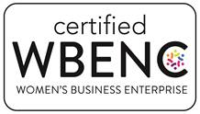We have finally arrived at the 3rd and final step in our 3-part series in building a better relationship. So now that we know It’s important to figure out a person’s communication style and what motivates them, and then ask the right questions we will finish this series off with stick with the facts.
Step 3 – Stick with the facts
Ask any of your executives and they will tell you some of the best relationships they have built occurred with how they handled a conflict. Conflicts can make or break relationships. The problem with conflicts is that as humans we have what is called a Fundamental Attribution Error. This is the tendency to explain conflicts with others based on character or disposition flaws rather than attribute it to the situation at hand.
Here’s an example we can all relate with:
When was the last time you were driving and someone cut you off? What would you say to that person if you had a chance to speak to them right after? What do you think their response would be? Let me assure you that you aren’t alone in being angry when this happens, and possibly adding in a few “choice” words. However, You don’t think, “I wonder what situation he’s in that’s causing him to drive this way.” Even though in those times when you may have driven crazily, it was almost certainly because of the situation you were in—you were late for a meeting or rushing to get home to a sick child.
In many industries, you could easily interact with up to 100 people in any given day. A lot is going on all around us and we have to count on others to get their jobs done on time and on budget. When this doesn’t happen, conflict can arise. In the heat of the moment, assumptions occur and we react. An argument arises and more often than not, people are frustrated with the other person because they “didn’t do their job” rather than the fact that the vendor was behind due to a weather delay (or even COVID!)…
Since this is human nature, what can we do about it? While this process is natural and common, our job is to be aware that sometimes what seems like ‘obvious facts’ to us is really just our own interpretation and we need to stay grounded in facts to prevent misunderstandings and unnecessary conflicts. Here are a few questions to ask yourself in these moments:
- Is it possible that I am jumping to conclusions?
- What assumptions might I be using?
- Why am I making these assumptions? What led me to these conclusions?
- What makes me believe that this is the “right” way to think or action to take?
Conflicts are bound to occur and yet when handled well conflict is bound to build a better relationship. It builds that relationship because following that conflict, both individuals has created a new-found trust and respect for one another. Each of these steps have helped create trust amongst individuals. Trust is what has allowed us to work with many of our clients over and over again. At that end of the day, building a better relationship is all about trust and we hope these 3 little steps are able to help you create a little more of that in whatever relationship you are trying to create/improve.









